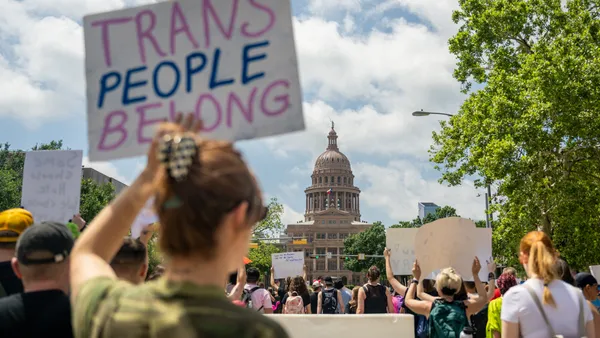Dive Brief:
-
A new law signed by California Gov. Gavin Newsom this month allows the term "emotional disability" to replace "emotional disturbance" for special education services. Supporters said the change will help destigmatize mental health challenges among students.
-
The measure, which takes effect Jan. 1, does not change the definition of the term and does not alter school-based supports for students with emotional disabilities. Rather, the change allows a "much more appropriate term" to now conform to California code and regulations, according to the bill's sponsor, Assemblymember Dawn Addis, a Democrat and former special education teacher.
-
The term “emotional disturbance” in special education has been controversial across the country, with at least one other state — New York — having adopted “emotional disability” instead.
Dive Insight:
In a June analysis of California's AB 2173, Addis said, "No child should be told that they are 'emotionally disturbed.' This outdated and inappropriate term stigmatizes students from the moment they enter the special education system, decreasing access to important services."
After the proposal became law earlier this month, the California Association of School Psychologists praised the move, saying in a statement that the "change in terminology will help to reduce the stigma associated with mental health challenges which can be a major barrier to individuals seeking help and support."
The term “emotional disturbance” is in the federal Individuals with Disabilities Education Act. It is one of 13 categories under IDEA under which students can qualify for special education services. According to the Center for Parent Information and Resources, a U.S. Department of Education technical assistance center, emotional disturbance is an umbrella term that can include specific mental health challenges, such as eating disorders, conduct disorders and anxiety disorders.
Nationally, about 4% of students ages 3-21 who qualified for services under IDEA in the 2022-23 school year were categorized with emotional disturbance, according to the Education Department's National Center for Education Statistics.
Students with emotional disturbance in the 2020-21 school year had higher dropout rates than students in any other disability category and were more likely in 2020 to be moved to a temporary alternative education setting because of offenses like drugs, weapons or serious bodily harm, according to the Education Department.
Racial disproportionality has been associated with the emotional disturbance category. The agency's data from the 2019-20 school year shows that Black or African American students with disabilities are more likely to be identified with intellectual disability or emotional disturbance than all students with disabilities. They are also more likely to receive a disciplinary removal compared to all students with disabilities, according to the data.













